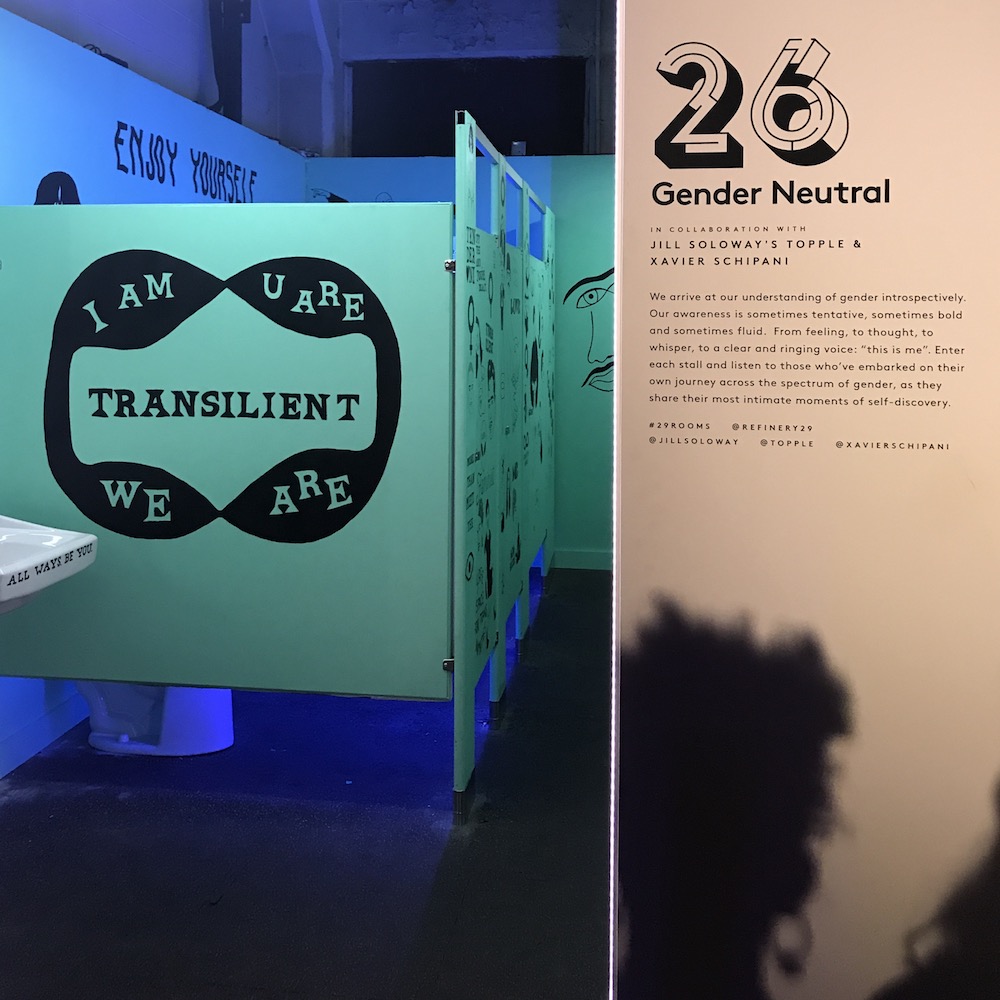Refinery29’s sold-out event produced experiences centered on art and activism that went well beyond branding.
As New York Fashion Week comes to a close, we look back on one of the hottest tickets in town this season. Refinery29’s 29Rooms had over 20,000 visitors from 45 states and 13 countries—a testament to the far-reaching appeal of the lifestyle media outlet.
In its third iteration, Refinery29 brought together a curated selection of independent artists and musicians, brands, and a handful of celebrities who collaborated to create 29 unique installations within a Williamsburg warehouse. The space was a funhouse of color and distraction, like a whimsical Instagram wonderland. Beyond that surface layer, it was an experience with substance, symbolism, and in-your-face activism.
Creative director Albie Alexander Hueston said this year’s “Turn It Into Art” theme “celebrates the transformative power of creativity in its ability to lift spirits, shift perception, and drive change. From controversial issues like gender bathroom laws to riding a carousel with unicorns, 29Rooms 2017 is our most thought-provoking and joyful experience yet.”
29Rooms tapped into the ways that art and social issues are intertwined, and—if the crowds are anything to go by—people are interested in engaging with this conversation. Below, we highlight five of the 29 rooms that explored feminism, self-acceptance, and other culturally relevant issues head-on.
Room 3: Erotica in Bloom
At the entrance of 29Rooms, ‘Erotica in Bloom’ hangs like picture of floral decadence. Upon closer inspection, this swirling world of oversized blooms reveals these flowers as symbols of female fertility. In collaboration with Maisie Cousins, a photographer known for her provocative use of nature as expressions of sensuality, this modern garden of (She)-den invites you in with playful giggles and whispers coming from behind the petals. Short videos are hidden deeper inside the buds, with beautiful imagery celebrating the female body, sexuality and nature. A sweet clean fragrance, like fresh picked wild flowers, lingers in the air, subtly persuading your senses to drift into this dreamscape.
Room 11: The Future Is Female
We’ve all had those days where we would just love to put on some gloves and take it out on a punching bag. Artist Jen Mussari and drummer Madame Gandhi capitalized on the sport’s current popularity, producing the ultimate creative expression: turning that aggressive energy into music. Hitting one of the punching bags inside this installation activates sounds. Both the bags and the gloves have painted lyrics like “The future is made of what we do each day” and “Fight for the future” to set the tone. The more you punch, the more music you make. The installation celebrates inner and outer strength and the power that can come from them.
Room 22: NeuroSpeculative AfroFeminism
As you swing into your chair in this conceptual salon, you are transported into the body of a young black woman. This is no ordinary trip to the hairdresser. Hyphen-Labs has created a transhumanistic experience that forces the viewer to walk in another person’s shoes (via her hair), if only for a few minutes. This virtual voyage confronts some larger themes, such as how do we harness synaptic plasticity to free our minds so can we reprogram our mental maps? When will we move past the limitations of our memories, and who is building our future? This experience confronts an empowered future, limited only by one’s own imagination.
Room 24: Hear Our Voice
The women responsible for organizing the January 21 Women’s March on Washington (and worldwide) have created a bustling activist headquarters, engaging passersby while bridging the gap between art and political activism. The point here is clear: Art can be a catalyst for change. Colorfully illustrated postcards carry hard hitting slogans such as “Hope Over Fear” and “We Can. We Have. We Will.” These messages encourage everyone to get involved. Pens, senator’s addresses and an in-house mailbox (and postage) create an immediate call to action in a fun, creative setting.
Room 26: Gender Neutral
Walking into Room 26 is like a time warp, bringing you back to your first day of middle school, hiding in the bathroom stall at lunch – but this time, all of the graffiti on the walls are kind and compassionate words of encouragement. Transparent’s Jill Soloway and artist Xavier Schipani have reimagined a space like those old-school restrooms but in a trans-safe environment that garners feelings of positivity, confidence and love in a time when the place you do your business is everyone’s business.
Written for and originally published by PSFK, and republished by BeautyMatter









